Automating a metal stamping press line is all about increasing productivity, safely!
Multiple factors are involved to achieve the desired objective:
- Shortening setup/changeover time
- Reducing downtime/maximizing uptime
- Allowing a single operator to tend multiple presses
- Increasing speed (spm) where possible
- Improving part quality
- Employing easy to use and effective safeguards
The press itself is a big part of the system. It needs to have enough tonnage, stroke, bed size, shut height, and automation control features to get the job done. Upgrades to the press drive, control and safety system may be required. If the press lacks the basic mechanical capability required it may need to be replaced. PRI offers SEYI servo, link motion, conventional drive straight side and C frame presses.
Vital Concerns
A press automation and OSHA/ANSI compliant clutch brake control is vital. Wintriss Controls’ SmartPAC PRO plays an important role by automating the press control functions, all through one easy-to-use screen. Configurations include die protection, load monitoring, programmable limit switching, automatic shut height/counterbalance control, and OSHA compliant clutch/brake control. With this control system, a press can run unattended until a malfunction is detected or a preset part count is reached. Accordingly, a single operator my tend multiple machines and/or perform other functions.
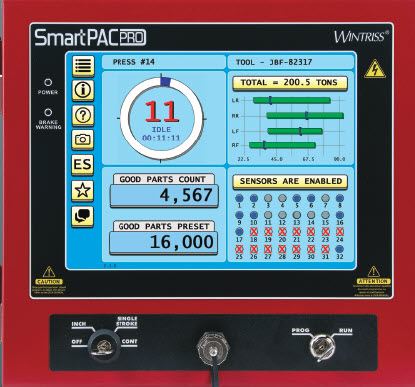
More often than not, an automation conversation with a customer starts with a specific problem, such as broken dies, rather than a specific request for automation. In the case of broken dies, we usually recommend Wintriss die protection products, a press automation option that offers a variety of benefits, including die crash prevention, reduced downtime and scrap, better party quality and improved OEE.
Progressive die operations require efficient coil feeding and processing equipment. Modern servo feeds shorten setup times, increase speed, and reduce misfeeds. Coil stock is typically delivered to the servo feed by a powered straightener. A stock reel or cradle typically pays off stock to the straightener. The straightener should have features to facilitate easy adjustment and delivery of the coil to the feed. Depending on how much time it takes to run a coil, features such as a coil load car or double end reel may be desirable. Coil hold down arms may be required for operator safety, especially, for thicker or high strength materials. Many features are available to automate the coil processing line. When possible, the coil feeding and processing equipment should be integrated with the press automation control.
Coil Processing
Sometimes floor space availability affects coil processing equipment choices. We offer space saver coil feeder, straightener combinations to minimize foot print requirements.
PRI offers a broad array of coil processing equipment from PRE, and Rapid Air.
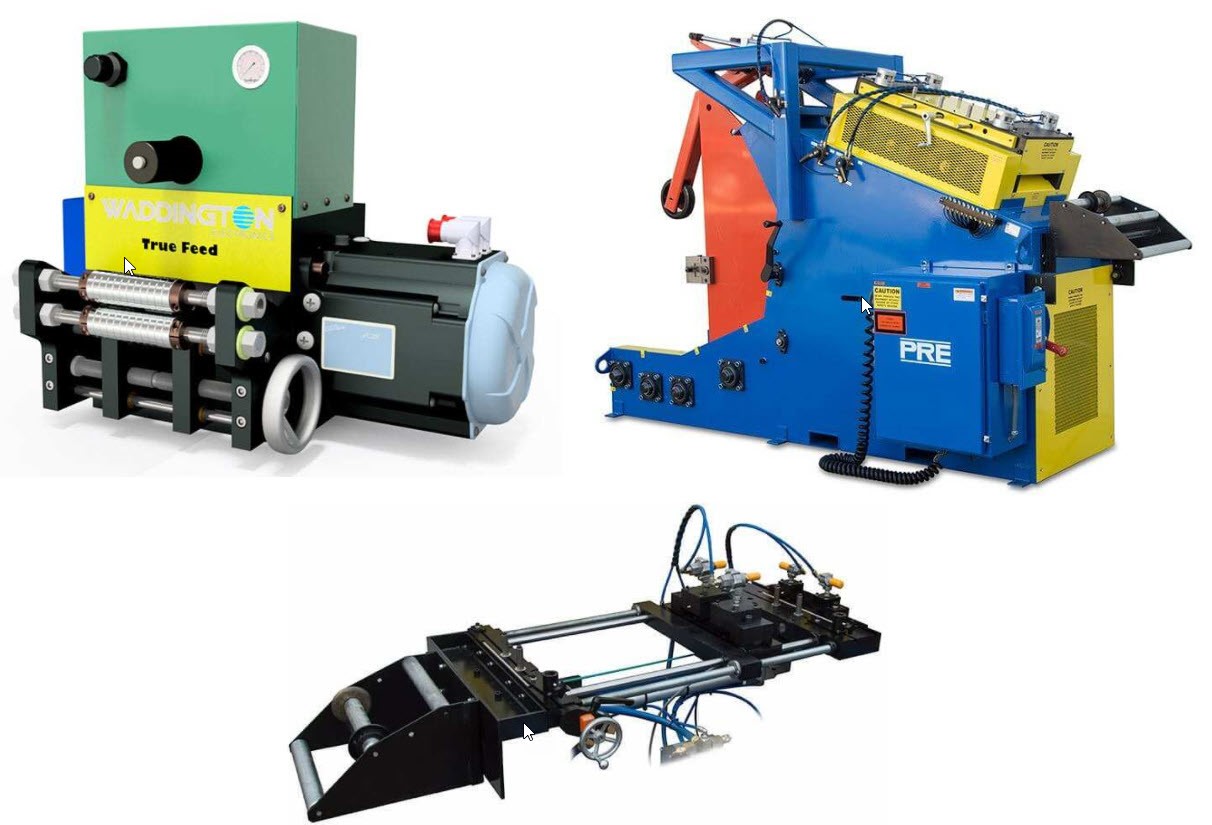
Transfer operations use less material than progressive tooling and often allow for more complex part configurations. Newer servo designs are far more productive than their mechanical counterparts. The transfer may be equipped with a blank feeder or integrated with a coil line. See our servo transfer systems from Linear Transfer Automation.
Single stroke press operations can also be automated. A modern press control coupled with a quick die change system will shorten setup times. A presence sensing system combined with foot switch or one hand control stroke initiation will maximize single stroke output.
QDC
Quick die change systems (QDC) – hydraulic clamping, die lifters, die handling, and die storage are critical to shortening setup time. Quick die change equipment provides a whole range of press automation options that answer important questions about how the old die is removed and the new die is presented, installed and clamped.
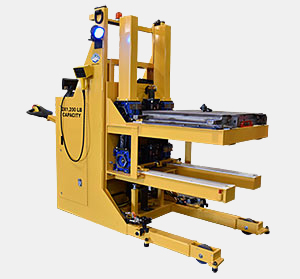
Press automation also extends to scrap handling and removal. Automating this process makes better use of your labor force and reduces the chances of press damage and injury. Scrap and slug handling can be done efficiently with belted or shaker conveyors. Stopping a press to remove scrap manually is inefficient.
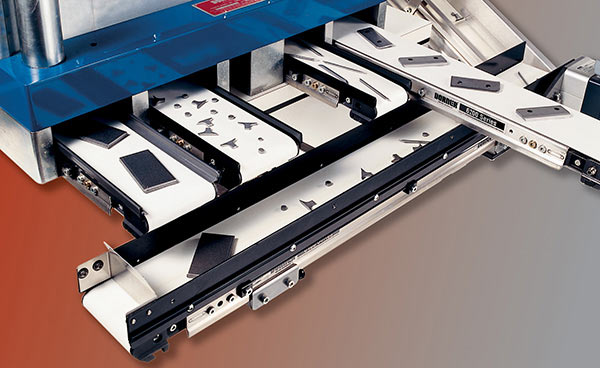
Lubrication – like scrap handling, it’s undesirable to stop the press to lubricate the die and coil stock. Pax airless spray lube systems can deliver the exact amount of lube exactly where you need it. Pax spray cabinets are also available to lubricate coil stock as it enters the tooling. In die press lubrication is timed by the SmartPAC Pro automation control.
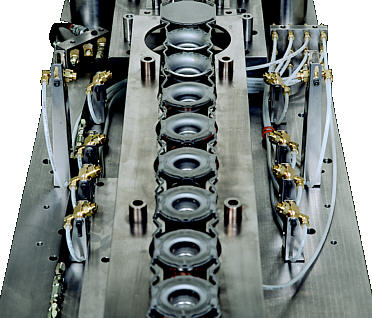
Pulling everything together is Wintriss’ ShopFloorConnect, real-time production tracking software that monitors the entire press system to determine overall equipment effectiveness (OEE) and identify inefficiencies.
The PRI Advantage
Major inefficiencies can be introduced when a manufacturer has to research and buy each automation component separately. Multiple vendors can lead to multiple frustrations. Production Resources eliminates those inefficiencies and frustrations by providing an integrated, consultative approach. We listen to customers and understand their problems, thanks to years of experience in helping manufacturers get the most from their press systems.
Talk to a PRI applications engineer today to take advantage of our expertise.

